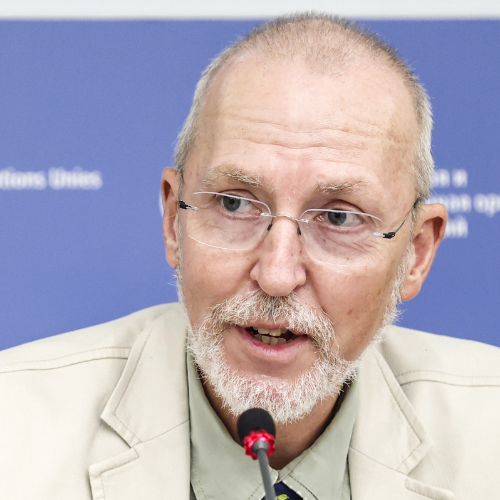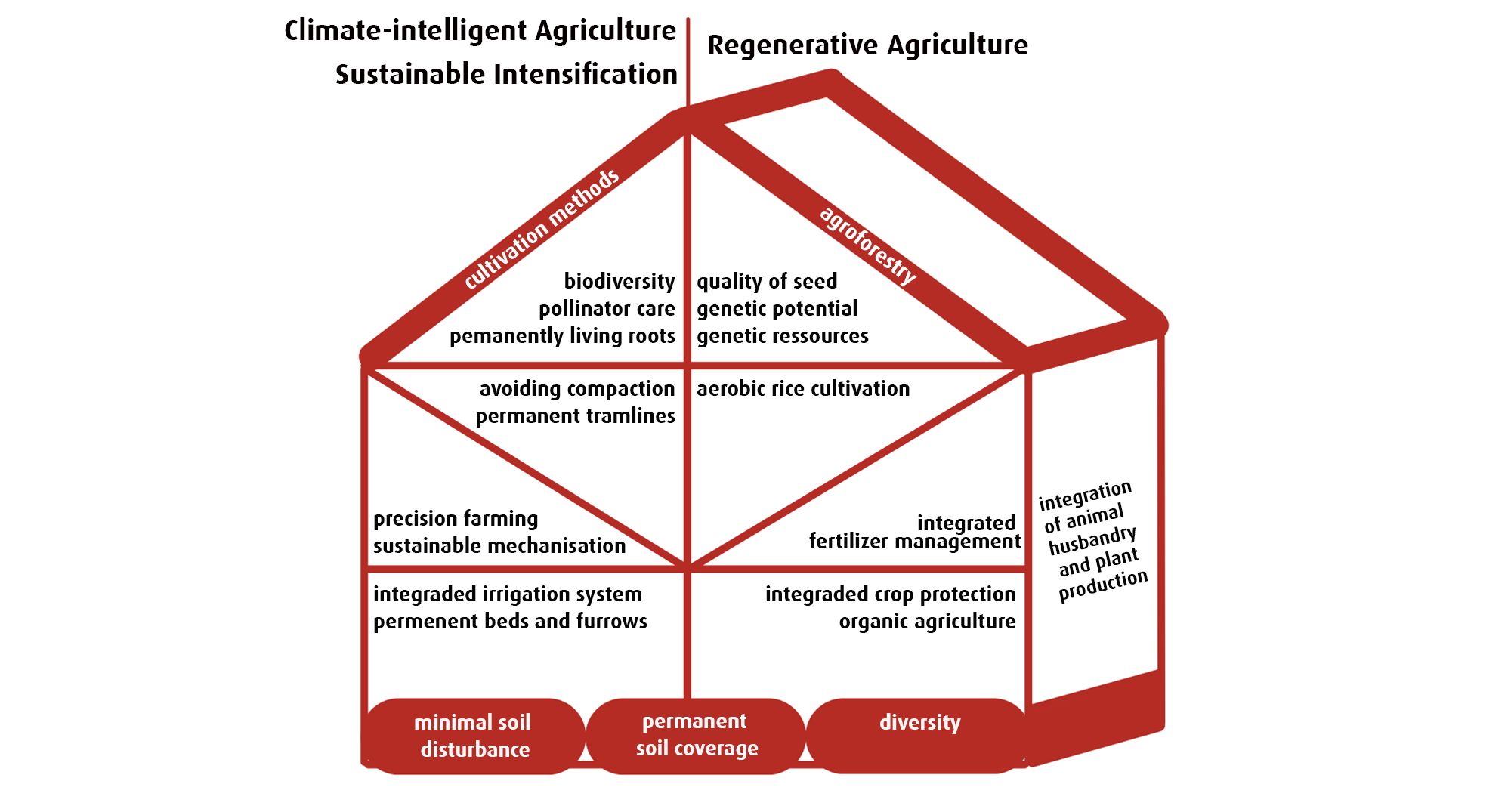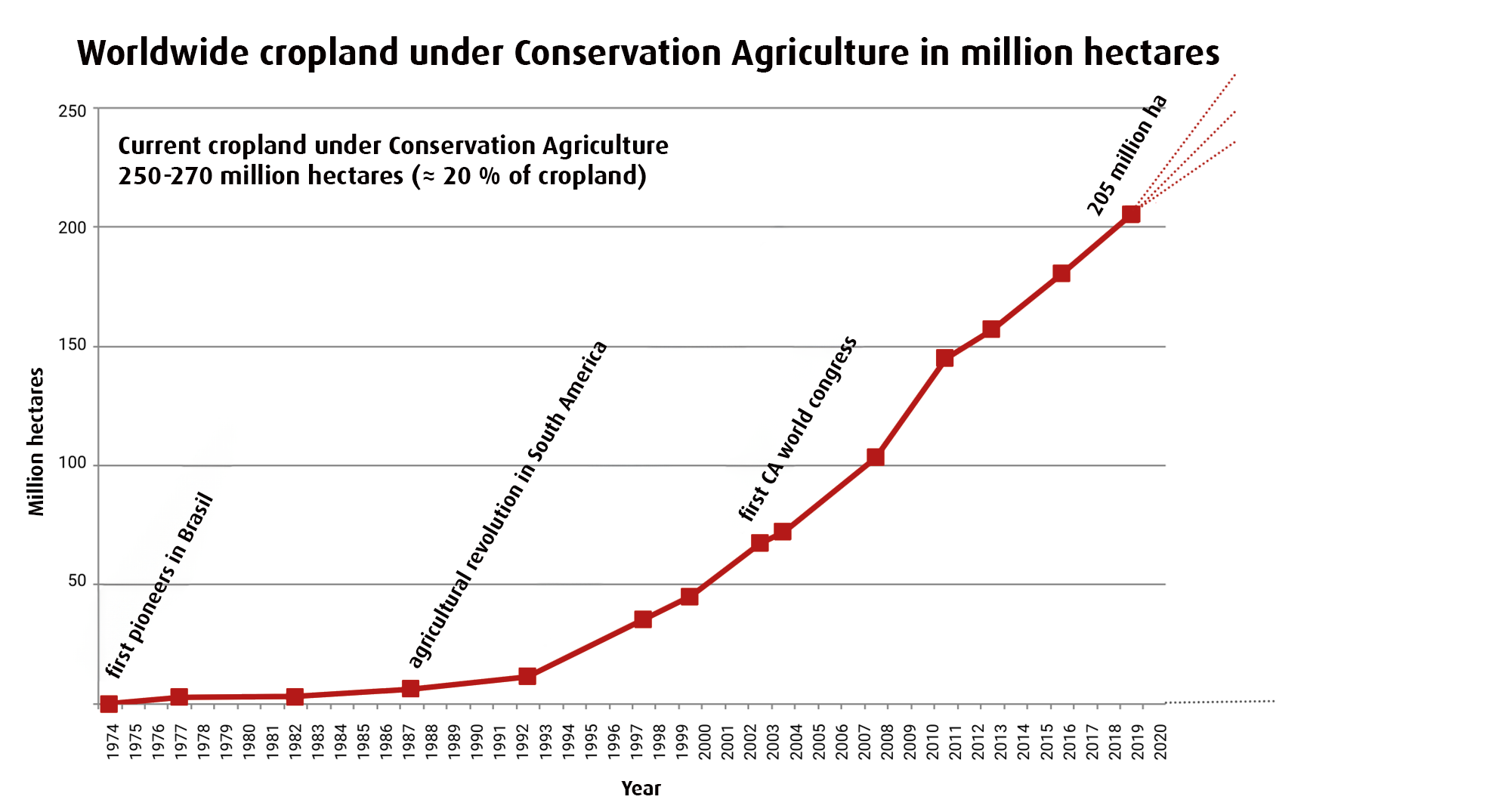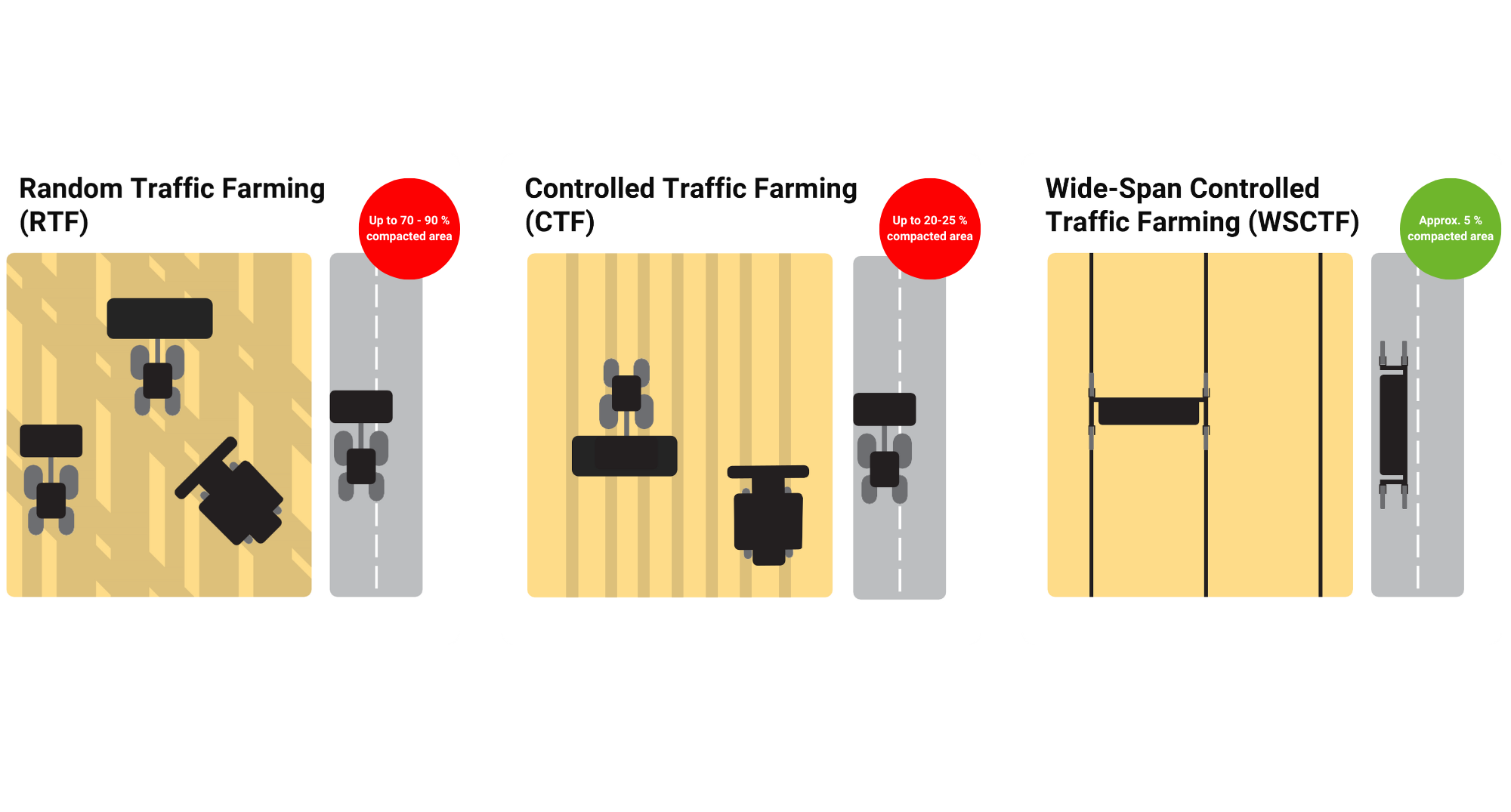How can sustainable agriculture be achieved? – A guest commentary by Dr. Theodor Friedrich

Theodor Friedrich, born in Venezuela, studied and completed his doctorate in agricultural sciences and agricultural engineering at the University of Göttingen. Since 1982, he has worked in international agricultural development, managed projects in Asia and Latin America and worked for the FAO in Rome. There he developed sustainable mechanization strategies and standards for pesticide application equipment. He contributed significantly to the definition and dissemination of conservation agriculture and has worked in over 75 countries. After holding positions as FAO ambassador in Cuba and Bolivia, he retired in 2020 and continues to promote sustainable agricultural practices.
Agriculture worldwide is currently facing major challenges. There are a number of questions that need to be answered. Questions that drive us to work with nature and not interfere with it too much:
Can we feed the world’s growing population in the long term? How do we have to manage our precious soils so that they remain productive despite climate change? How can we counteract the extinction of species and the decline in pollinator populations and natural pest regulation mechanisms? And how can efficient agriculture be practiced despite declining freshwater reserves and groundwater levels?
In this guest commentary, Dr. Theodor Friedrich answers these questions and presents solutions that are already feasible today.

Is Sustainable Agriculture Achievable? By Dr. Theodor Friedrich
Agriculture worldwide faces major challenges: on the one hand, the number of hungry people is currently increasing again, and in light of the growing world population, we must also increase our global food production. On the other hand, agriculture is increasingly destroying natural cycles, and non-renewable resources, such as soil, are being permanently lost. Ultimately, agriculture itself suffers from these problems, whether it is climate change with extreme weather events, species extinction with the decline of pollinator populations and natural pest control mechanisms, or decreasing freshwater reserves and groundwater levels.
This means we cannot afford to produce less, but we also cannot afford to continue exploiting nature. Unfortunately, in many parts of the world, nature is already so damaged that sustainable land management is no longer sufficient to solve the problems. While we produce intensively, we must also regenerate ecosystems, which is what the term “regenerative agriculture” implies. To tackle this dilemma, the Food and Agriculture Organization of the United Nations (FAO) declared “sustainable intensification” as the organization’s top strategic goal in 2009. This goal was based on experiences gained worldwide with “Conservation Agriculture.” This type of land management is based on three principles:
- No or minimal soil movement. This means permanent zero tillage with direct seeding for all crops and as little soil movement as possible for other cultural practices.
- Continuous coverage of the soil surface with plant mulch or living plants.
- Diverse and long crop rotations for arable crops, as well as mixed crops with undersowing for perennial crops and plantations; legumes should be included, a crop rotation with forage crops and pastures is helpful, as is the integration of livestock in arable farms. Trees in the agricultural landscape, both in arable and pasture areas, are also recommended.
This type of agriculture is also the foundation for the aforementioned regenerative agriculture and provides the basis for regeneration.

Figure1: Conservation agriculture with its 3 core principles is the basis of sustainability. To increase productivity, all available technologies can be used in such a way and quantity that the natural processes are not permanently disrupted or interrupted. If a technology is missing, the “house” has a hole. If the foundation is missing, the whole house no longer has stability.
Half a century of practical experience with Conservation Agriculture has shown that it can not only increase agricultural production and yields in the long term but also significantly reduce the use of pesticides and mineral fertilizers. Groundwater reserves are replenished, agriculture suffers less from climate extremes, water and environmental pollution from agriculture disappear, and biodiversity visibly improves. Moreover, soils become healthier, and consequently, the food produced on them is healthier too.

Figure 2: Conservation agriculture is not a theory but has been successfully implemented in practice worldwide for more than 50 years.
However, there is a catch. While untreated soils generally tend to compact less, and especially the subsoil beyond the reach of deep cultivators is structured by earthworms, surface compaction and tire tracks should also be avoided as much as possible, as these and their remediation would be part of the undesirable “soil movement.” This can be achieved with smaller machines equipped with low-pressure tires and tire pressure regulators or rubber track systems. However, many time-limited tasks, such as spreading slurry or applying pesticides, as well as harvesting by agricultural contractors, are carried out with very large and heavy machines, where tire tracks cannot always be avoided under unfavorable weather conditions, such as in the fall of 2023 or spring of 2024 in Germany. The only solution here is permanent tramlines, or Controlled Traffic Farming (CTF) in English. With this method, tire tracks are always concentrated on the same paths, and the soil where the plants are supposed to grow is never mechanically loaded. Studies have shown that this alone can increase yields by 50-100%, so that even with narrow track widths dictated by road traffic, significant yield increases can theoretically be achieved. The tracks are compacted paths on which vehicles can drive like on rails, even under poor soil conditions. However, it is even better to significantly widen the track widths while keeping the width of the tracks themselves narrow, as is the case with gantry tractors.

Figure 3: Comparison of soil compaction in RTF, CTF and WS-CTF systems
However, these have so far had the problem of not being allowed to drive on public roads, which can be solved with a long-distance driving device. Currently, NEXAT is the only commercially available model of such a wide-span portal tractor that is roadworthy and has attachments for all tasks included in Conservation Agriculture.
This shows that sustainable and even regenerative agriculture is already feasible today, not only on smaller farms but also on very large mechanized companies.
Sources:
Kassam A.H., Friedrich T., Shaxson F., (eds.) (2008): Proceedings of an International Technical Workshop on Investing in Sustainable Crop Intensification: The case for improving soil health. FAO, Rome, 22-24 July 2008. Integrated Crop Management, Vol. 6. 2008.
FAO 2011: Save and Grow, Food and Agriculture Organization of the United Nations, Rome, pp. 116
Kassam, A. (ed.) 2019: Advances in Conservation Agriculture, Vol. 1: Systems and Science, Burleigh Dodds Science Publishing, Cambridge, UK (www.bdspublishing.com)
Kassam, A. (ed.) (2019): Advances in Conservation Agriculture, Vol. 2: Practice and Benefits, Burleigh Dodds, Cambridge, UK, (www.bdspublishing.com)
Kassam, A. (ed.) 2022: Advances in Conservation Agriculture, Vol. 3: Adoption and Spread, Burleigh Dodds Science Publishing, Cambridge, UK (www.bdspublishing.com)
Derpsch, R., Kassam, A., Reicosky, A., Friedrich, T., Calegari, A., Basch, G., Gonzalez-Sanchez, E., Rheinheimer dos Santos, D. (2024): Nature’s Laws of Declining Soil Productivity and Conservation Agriculture; Soil Security, Volume 14, March 2024, 100127, https://doi.org/10.1016/j.soisec.2024.100127
